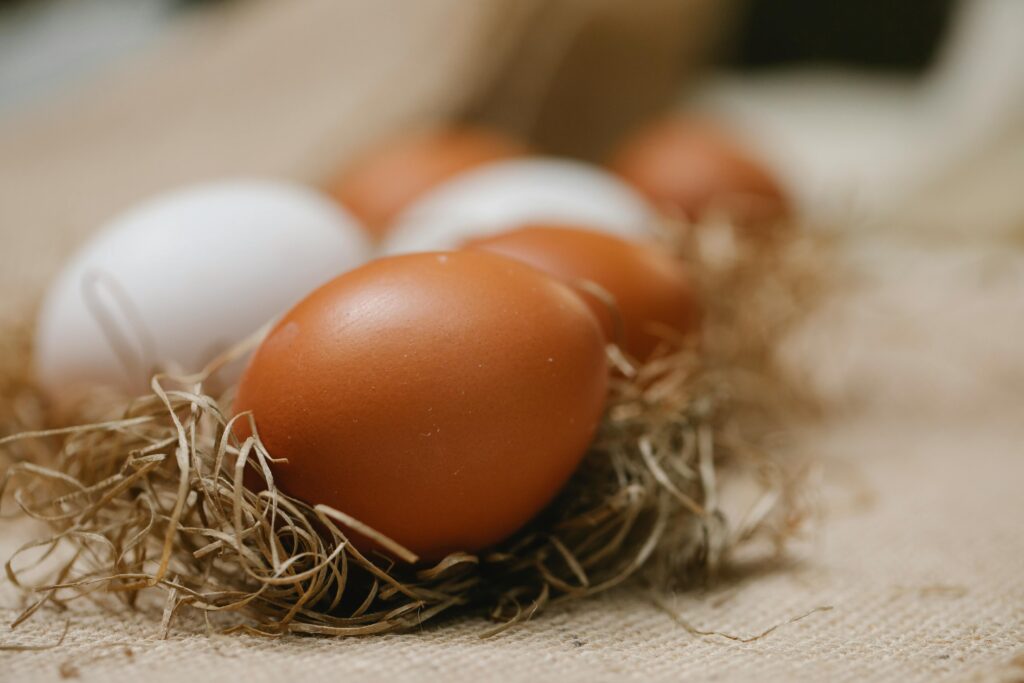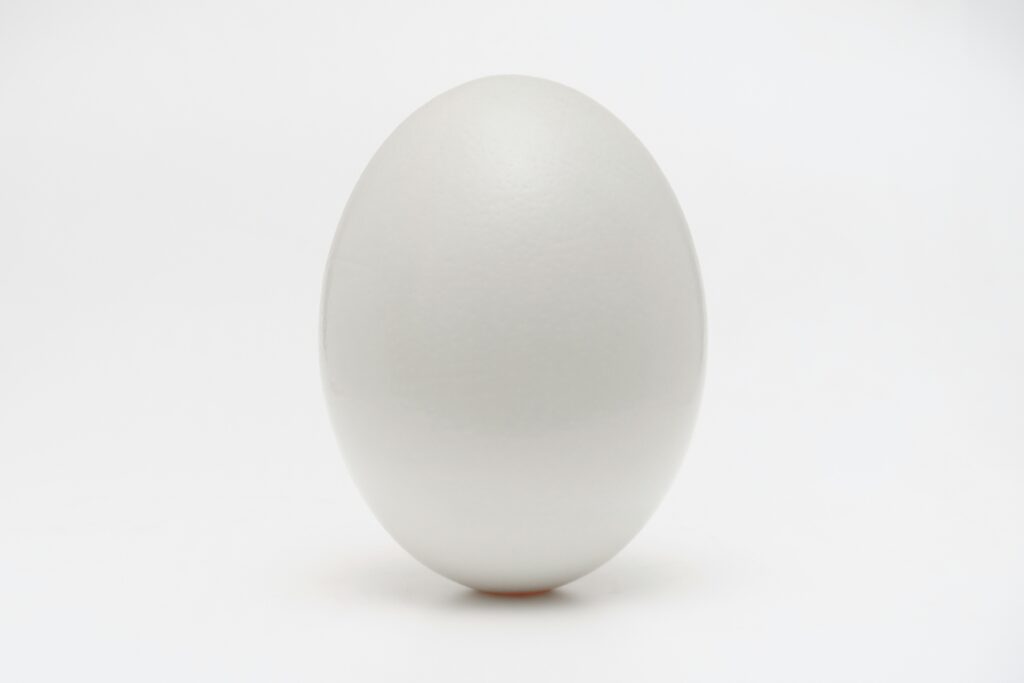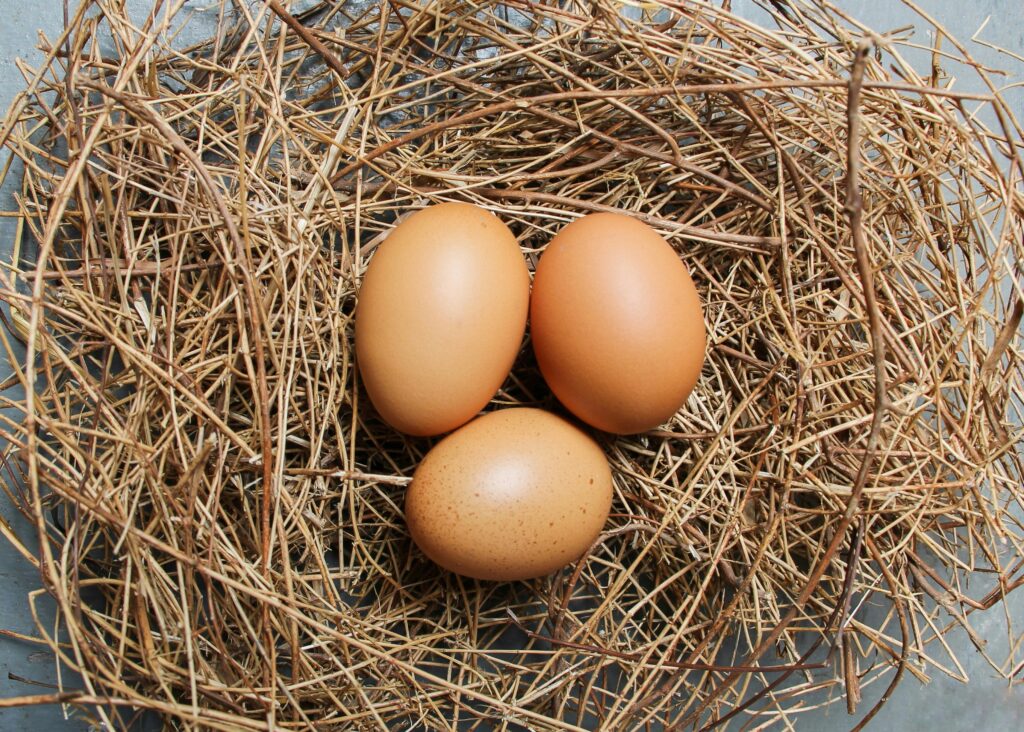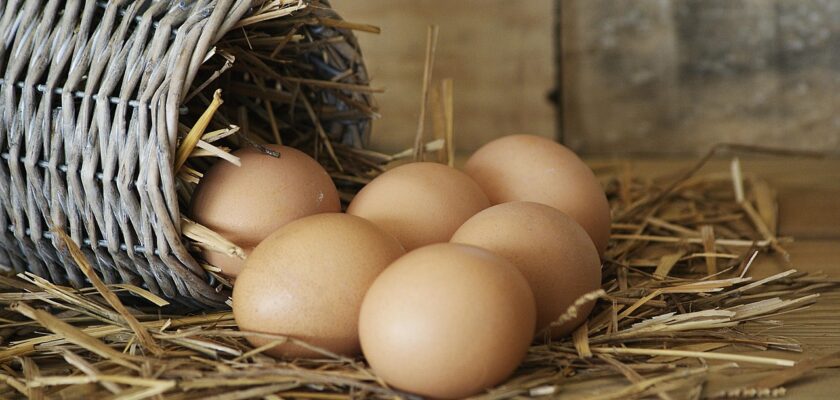Introduction
Ever wondered, “How many eggs do chickens lay?” You’re not alone. Whether you’re a backyard chicken keeper or just curious about farm life, understanding the egg-laying habits of chickens can help you care for them better or simply satisfy your curiosity.
Egg production isn’t a one-size-fits-all scenario. It varies greatly depending on breed, environment, health, and even emotional factors. This guide dives deep into everything you need to know—from weekly averages to what impacts production.

Photo by Klaus Nielsen
Egg-Laying Basics
What Influences Egg Production?
Several variables can make or break how often your chickens lay eggs:
- Breed: Some breeds are prolific layers, while others are more ornamental.
- Age: Young hens (pullets) lay fewer eggs until they mature.
- Diet: Protein, calcium, and balanced feed are essential.
- Season: Less daylight can slow or stop laying.
- Health: Illness, parasites, or stress directly reduce output.
Anatomy of a Hen’s Reproductive System
A hen’s egg-laying system is fascinating. Here’s how it works:
| Part | Function |
| Ovary | Contains thousands of immature ova (yolks) |
| Infundibulum | Where fertilization occurs |
| Magnum | Adds the egg white (albumen) |
| Isthmus | Adds shell membranes |
| Uterus | Forms the hard eggshell |
| Cloaca | Passage for egg-laying and waste |
An egg takes about 24–26 hours to form. So technically, a hen can lay one egg per day, but it often averages slightly less due to natural pauses.
How Many Eggs Does a Chicken Lay Per Week?
Most hens lay 4 to 6 eggs per week, depending on their breed and conditions. Here’s a rough breakdown:
| Breed | Weekly Average |
| ISA Brown | 6–7 eggs |
| Leghorn | 6 eggs |
| Rhode Island Red | 5–6 eggs |
| Plymouth Rock | 4–5 eggs |
| Australorp | 5–6 eggs |
It’s important to monitor your flock to establish each bird’s baseline. Variations are normal, especially during molting or changes in weather.

Photo by Rebekah Howell on Unsplash
Monthly and Annual Egg Production
Understanding the broader production cycle helps with planning feed and egg collection.
| Breed | Monthly Avg. | Annual Avg. |
| Leghorn | ~25 eggs | 300+ eggs |
| ISA Brown | ~26–28 eggs | 320+ eggs |
| Rhode Island Red | ~22–24 eggs | 260–280 eggs |
| Sussex | ~20–22 eggs | 240–260 eggs |
Note: Most hens begin laying at 5–6 months old and peak for the first 2 years, then gradually decline.
Best Egg-Laying Chicken Breeds
Choosing the right breed sets the tone for your egg basket.
Rhode Island Reds
Hardy and productive, they lay large brown eggs and thrive in various climates.
Leghorns
These sleek white birds are egg-laying machines, producing lots of white eggs with minimal feed.
ISA Browns
Hybrid superstars, ISA Browns are docile, friendly, and lay consistently—making them ideal for beginners.
How Age Affects Egg Production
Just like people, chickens go through life stages—and their egg-laying abilities change over time.
Pullets (5–6 months old)
These are your teenage hens, and they’re just starting to lay. At this stage, you’ll notice:
- Smaller eggs
- Inconsistent timing
- Occasional skipped days
But don’t worry—it’s totally normal.
Peak Production (1–2 years old)
This is when hens are at their most productive. You can expect:
- Larger, regular eggs
- 5–7 eggs per week depending on breed
- Consistency in quality and frequency
This is the golden age for egg production.
Post-Peak (3+ years)
As hens age, their laying slows down. While they can still produce:
- Frequency drops (3–4 eggs/week)
- More frequent molting
- Longer rest periods in winter
At 5+ years, many hens stop laying altogether, though some may surprise you with a few seasonal eggs.

Image by stockking on Freepik
Environmental and Dietary Factors
To get the most from your hens, their surroundings and feed need to be on point.
Lighting
- Chickens need 14–16 hours of light per day to maintain steady egg production.
- In winter, you can supplement with safe artificial lighting to mimic longer daylight hours.
Temperature
- Extreme heat or cold stresses hens.
- Maintain a coop temp between 50–75°F (10–24°C) for ideal comfort.
Nutrition
A balanced diet means:
- 16–18% protein for layers
- Calcium-rich feed (or crushed oyster shells)
- Clean, fresh water at all times
Avoid feeding too many scraps—excess carbohydrates or salt can disrupt laying.
Common Egg-Laying Problems
Understanding signs of trouble can prevent bigger issues in your flock.
Soft Shell or No Shell Eggs
Causes:
- Calcium deficiency
- Young hens still adjusting
- Heat stress
Solutions:
- Provide oyster shells
- Add vitamin D supplements
- Improve ventilation in the coop
Broodiness and Stress
Some hens go broody (sit on eggs, stop laying) even without a rooster. Others stop laying due to:
- Predator threats
- Loud noises
- Sudden environmental changes
Fix it by:
- Separating broody hens temporarily
- Using enrichment (hanging veggies, perches)
- Keeping a consistent daily routine

Photo by Daniele Levis Pelusi on Unsplash
Natural vs Artificial Lighting Impact
Lighting is more powerful than many realize. Here’s a breakdown:
| Lighting Type | Pros | Cons |
| Natural Sunlight | Cost-effective, natural | Shorter days reduce egg production |
| Artificial Lighting | Consistent year-round laying | Must be safely installed & timed |
Best practice: Use a timer and warm white light bulbs, set to turn on early morning rather than late night to mimic sunrise.
Free-Range vs Caged Layers
Which system is better? Let’s weigh the options:
Free-Range Chickens
Pros:
- Access to bugs and grass
- Happier, more active birds
- Potentially richer yolks
Cons:
- Lower overall egg yield
- Harder to collect eggs
- Increased predator risks
Caged or Coop-Only Chickens
Pros:
- Higher consistency in laying
- Easier management
- Fewer broken or lost eggs
Cons:
- Can lead to boredom or stress
- May require more supplements
A hybrid system—cooped at night, free-range by day—often delivers the best of both worlds.
How to Track Egg Production
Keeping a log helps you detect trends and issues early.
Tools:
- Manual notebooks or printable egg-tracking charts
- Apps like Flockstar, PoultryPal, or Farmbrite
Track:
- Daily egg count
- Date and breed info
- Feed changes or environmental notes
Over time, you’ll learn what’s normal—and what needs fixing.
Myths About Egg-Laying Chickens
Let’s debunk a few:
- Myth: Hens need a rooster to lay eggs.
Truth: Nope! Hens lay eggs regardless. Roosters are only needed for fertilization. - Myth: Brown eggs are healthier than white eggs.
Truth: Egg color depends on breed. Nutritional value is virtually the same. - Myth: Giving chickens scraps boosts laying.
Truth: Some scraps are fine, but too many disrupt balanced nutrition.
FAQs
1. How many eggs does a chicken lay per year?
Most breeds lay 200–320 eggs/year, depending on age, health, and breed.
2. Do chickens lay eggs every day?
Not exactly. A typical cycle is 5–6 eggs/week, with occasional rest days.
3. Can chickens lay eggs without a rooster?
Yes, hens naturally produce eggs. Roosters are only needed to fertilize them for hatching.
4. What age do hens stop laying eggs?
Laying slows around 3 years and may stop entirely by 5–7 years, though some continue sporadically.
5. Why did my chicken suddenly stop laying?
Possible causes include molting, stress, illness, or reduced daylight. Investigate and adjust accordingly.
6. Do seasonal changes affect egg production?
Yes. Chickens lay less in winter due to shorter days and colder temperatures.

Photo by montatip lilitsanong on Unsplash
Conclusion
So, how many eggs do chickens lay? The answer: it depends. With proper care, the right breed, and good nutrition, hens can produce hundreds of eggs annually—especially in their peak years.
Whether you’re raising a backyard flock or just fascinated by chickens, understanding their laying patterns helps you provide better care and set realistic expectations.
